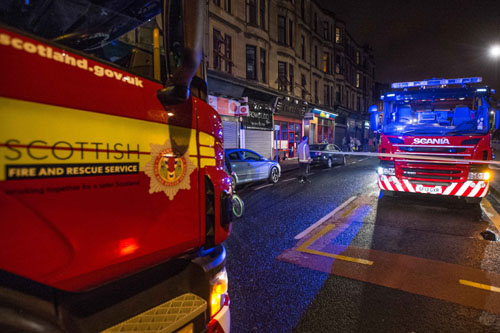A man has died following a fire at a home in the Anniesland area of Glasgow during the early hours of Monday.
Scottish Fire and Rescue Service (SFRS) crews were sent to Fifth Avenue from Knightswood and Maryhill in response to a 999 call made shortly after 3:30am.
Firefighters reached the scene four minutes later and teams in breathing apparatus entered the two-storey building to search for anyone inside.
They found a well-developed fire within a bedroom and recovered the man, who was given emergency treatment for severe burns and the effects of breathing in smoke.

He was taken by ambulance to South Glasgow University Hospital but was later confirmed to have died.
The fire is thought to have been caused by a cigarette setting bedding alight, however specialist officers from the SFRS Fire Investigation Unit are working to establish the full circumstances.
The tragedy happened as firefighters throughout Scotland are engaged in a week of action to reach out to people who may be at increased risk from fires.
Assistant Chief Officer Lewis Ramsay, the SFRS director of prevention and protection, said: “In the wake of this tragedy everyone’s thoughts will of course be with the man’s family and friends.
“The loss of life through fire in the home will certainly be felt across the community and it will profoundly touch many people.
“We must all be asking ourselves if we know someone who could be at risk and thinking about those who are older, who have health conditions or who live alone and might be a bit isolated.
“Our crews can provide them with support to reduce the risk they will experience a fire or be hurt as a result, so anyone who is concerned about a friend, a relative or a neighbour should contact us now.”
On Friday SFRS issued a nationwide appeal for people to put firefighters in touch with anyone who may be at increased risk.

